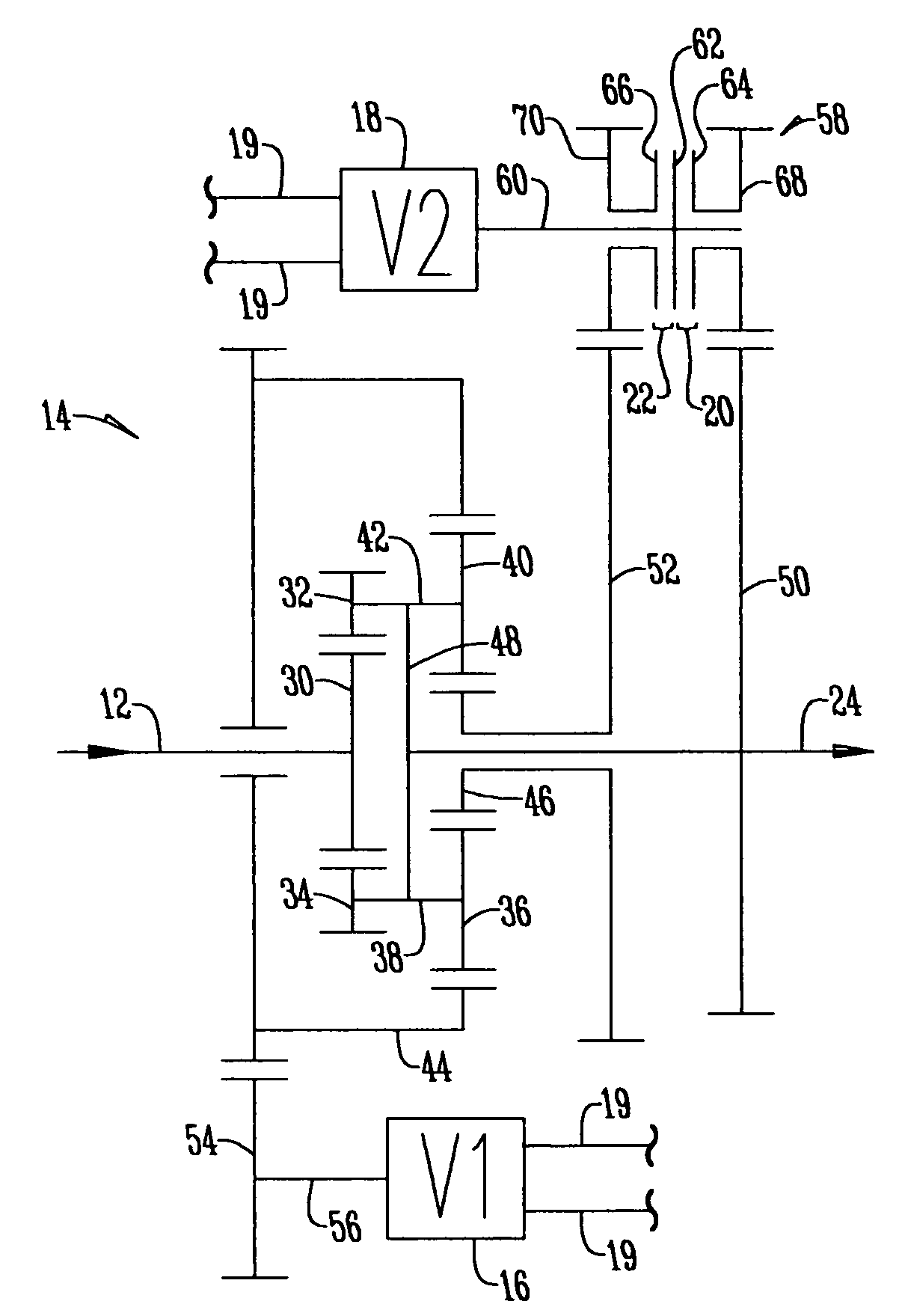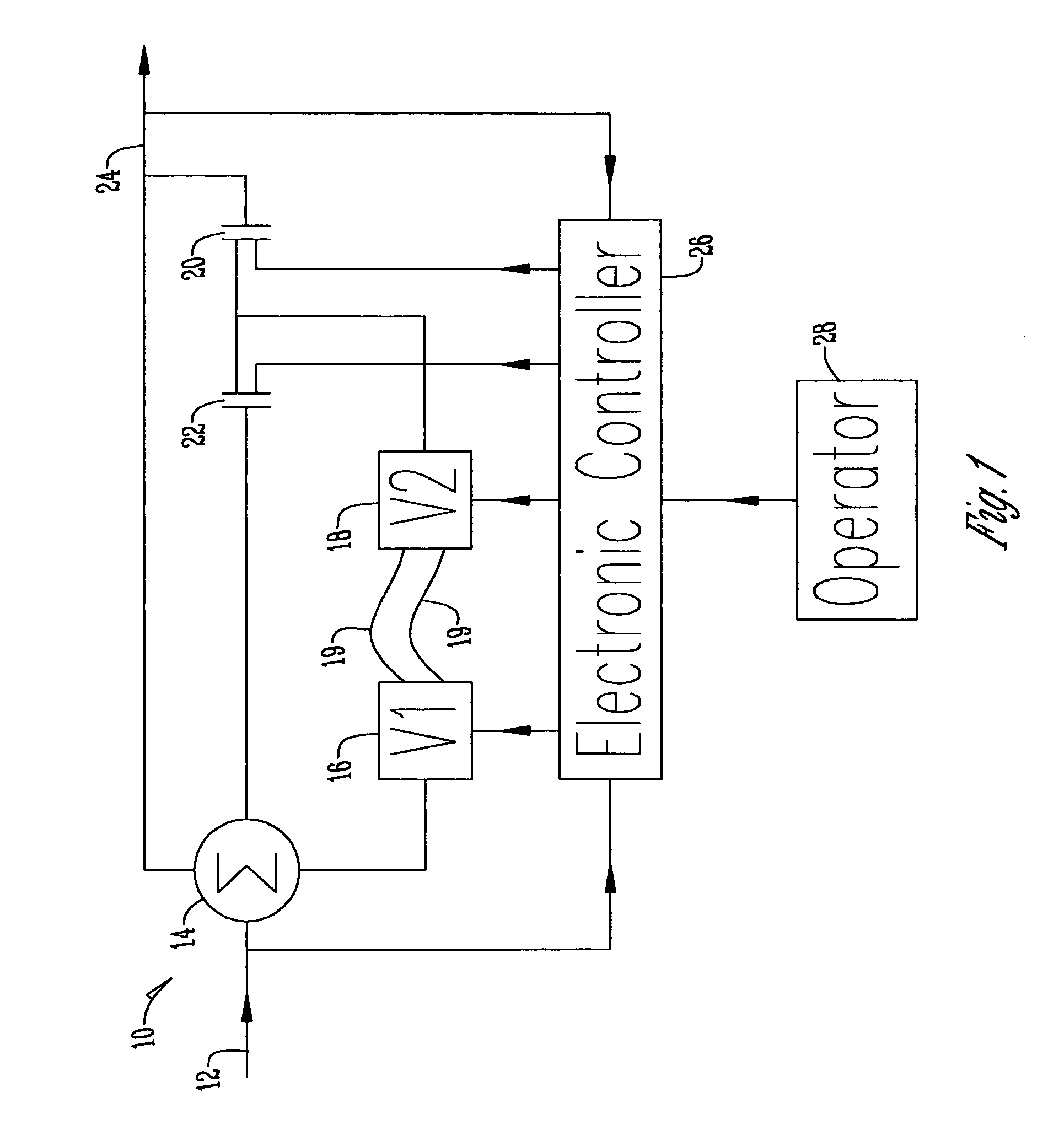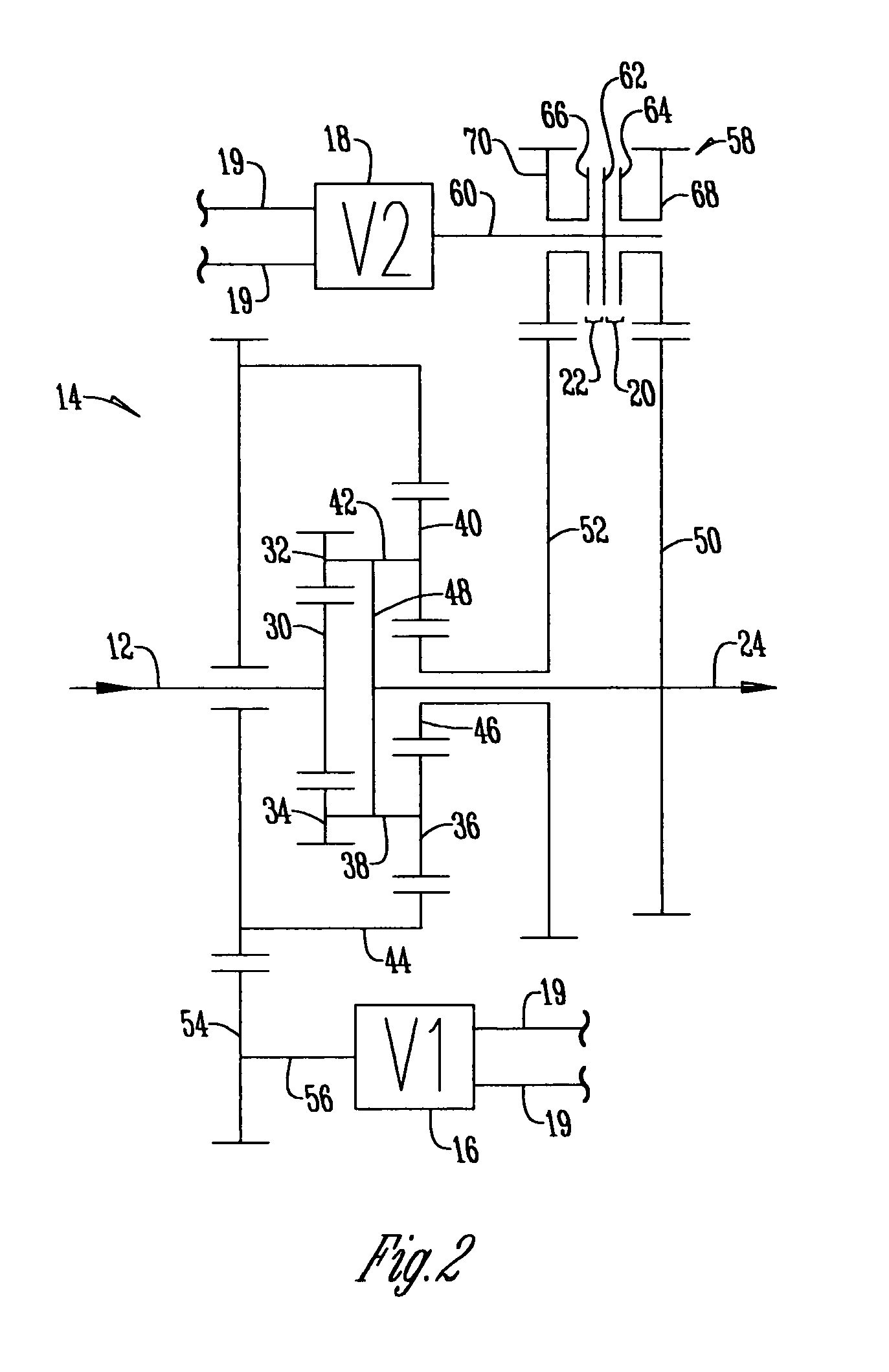Method and means for shifting a hydromechanical transmission
a technology of hydromechanical transmission and shifting mode, which is applied in the direction of gearing control, gearing element, gearing, etc., can solve the problems of limited maximum torque capacity of synchronizer, inactive control of the speed of this unit, and still remain problems, so as to achieve high-quality shifting
- Summary
- Abstract
- Description
- Claims
- Application Information
AI Technical Summary
Benefits of technology
Problems solved by technology
Method used
Image
Examples
Embodiment Construction
[0028]FIG. 1 shows a block diagram of the two-mode hydromechanical transmission 10 of the present invention. The transmission 10 has an input shaft 12 that is rotatably connected to a planetary gear system 14. Rotatably connected to the planetary gear system 14 is a first variable displacement hydrostatic unit 16 that is fluidly connected to a second variable displacement hydrostatic unit 18 via hydraulic fluid lines 19. The system 10 is designed such that the planetary gear system 14 can be connected to the second variable displacement hydrostatic unit 18 by a first clutch 20 or a second clutch 22, depending on the desired mode of the transmission. Depending on the rotation of the input shaft 12, the outputs of the first and second variable displacement hydrostatic units 16, 18, and the clutching of the planetary gear system 14 by clutches 20, 22, an output shaft 24 will be driven at an output rotational speed. An electronic controller or control unit 26 will monitor the rotation o...
PUM
 Login to View More
Login to View More Abstract
Description
Claims
Application Information
 Login to View More
Login to View More - R&D
- Intellectual Property
- Life Sciences
- Materials
- Tech Scout
- Unparalleled Data Quality
- Higher Quality Content
- 60% Fewer Hallucinations
Browse by: Latest US Patents, China's latest patents, Technical Efficacy Thesaurus, Application Domain, Technology Topic, Popular Technical Reports.
© 2025 PatSnap. All rights reserved.Legal|Privacy policy|Modern Slavery Act Transparency Statement|Sitemap|About US| Contact US: help@patsnap.com



